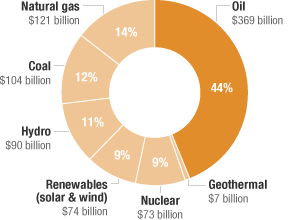Addressing Texas High Speed Rail Concerns
The proposed new high-speed rail (HSR) project in Texas has become a lightning rod for criticism. While the project is different from the now cancelled publicly funded HSR projects in Florida, Michigan, and Ohio and the ongoing project in California, critics remain concerned.
The Texas project supported by Texas Central Railway (TCR) is fundamentally different from the U.S. public government approach in several ways. First, it focuses on one specific corridor (TCR chose one out of 97 it had identified). HSR succeeded in France and Japan because both countries build their first HSR lines on the most optimal corridor, not the most shovel-ready. Contrast that with the Obama Administration’s plans to give money to nearly 40 states. The TCR project is focused on true 200 mile-per-hour high-speed rail while the government program has a multitude of aims:
- build HSR
- improve existing rail
- build political bridges
- develop passenger rail
Second, the Texas developers are seeking advice and parts from the Japanese, who operate the most successful HSR line in the world. TCR plans to use higher-speed Japanese Shinkansen trains which will travel fast enough to offer 90-minute trip times. Many of the government-funded rail lines are upgrades of existing lines with top speeds of 110 miles per hour.
Third, TCR’s line will link two of the quickest growing metro areas in the country. The metro area populations of Dallas and Houston are expected to double. Contrast that with Los Angeles and San Francisco that are seeing little if any growth in population.
Fourth, both are privately funded. While TCR will not accept grants or subsidies, it will consider existing federal credit assistance such as Railroad Reinvestment and Financing (RRIF) or Transportation Infrastructure Finance and Innovation (TIFIA) loans. TIFIA financing requires an investment-grade rating while RRIF is being strengthened to include similar provisions. TCR might also seek DOT approval to issue tax-exempt private activity bonds (PABs), which are widely used on highway P3 concession projects. Such bonds are backed solely by project revenue. Taxpayers are not on the hook in case the project defaults; only the bond-buyers are.
Project opponents have raised legitimate concerns but none of them should delay the project. Some farmers and ranchers are concerned that their properties will be acquired through eminent domain. However, TRC only needs about 100 feet of eminent domain. Additionally, the agency plans to use eminent domain (as other private parties including pipelines companies and electric companies do) as a last resort and only after making market-value offers. Further, if there are abuses of the system, Texas has a detailed appeal system already used for the Keystone Pipeline.
Others are concerned that taxpayer subsidies will be required. Whether TCR can build its project within the budget estimated is an open question. Given the challenges of breaking even on HSR in a low-density state such as Texas, skepticism is appropriate. However, as long as taxpayer funds are not used, project sponsors should be allowed to try to build the train. If the project later requires taxpayer subsidies, Texas taxpayers should kill it. While the financial realities are a legitimate concern for those who invest equity in the program or buy bonds, the program should receive the same level of legal and regulatory scrutiny as any other private railroad project.
